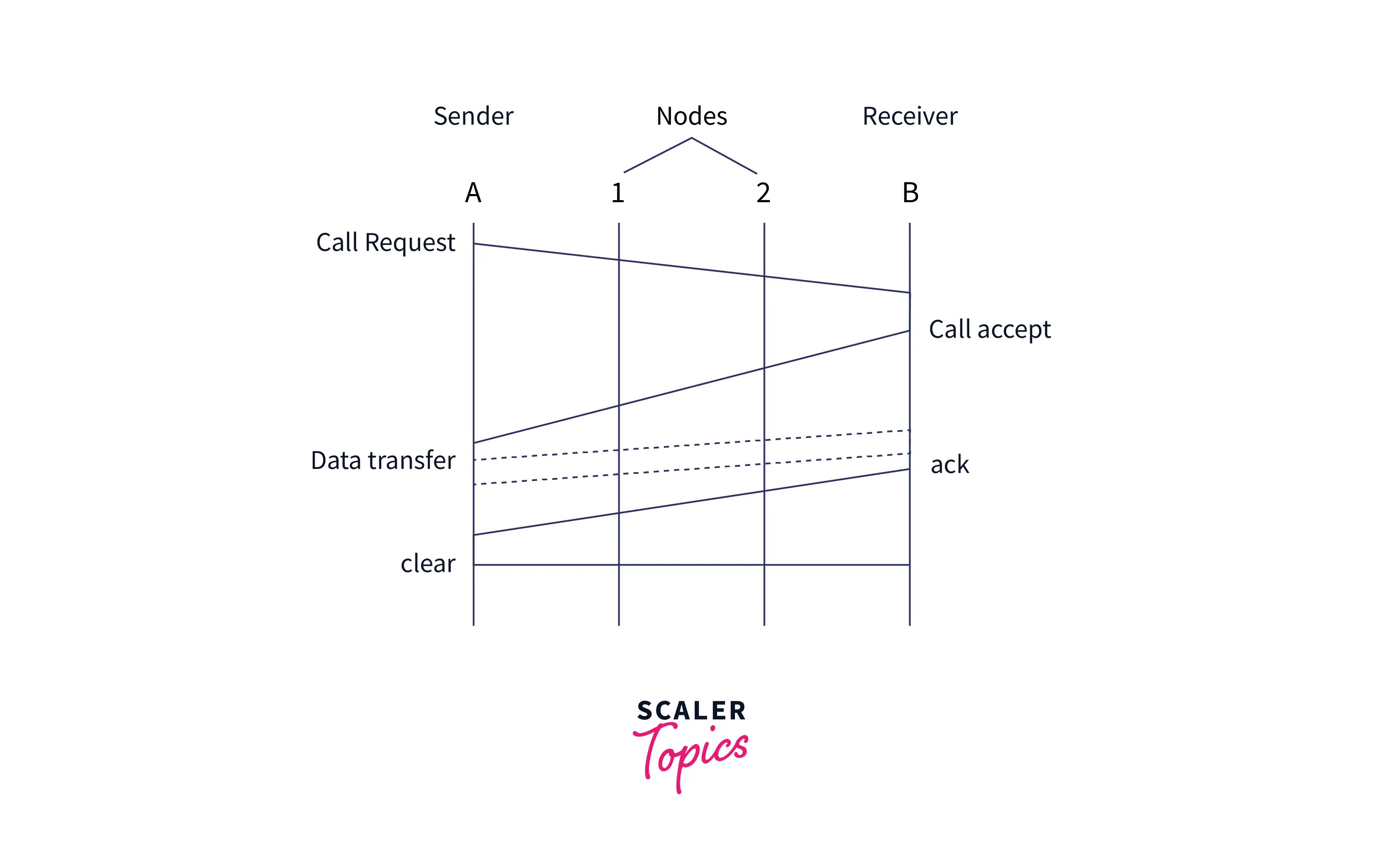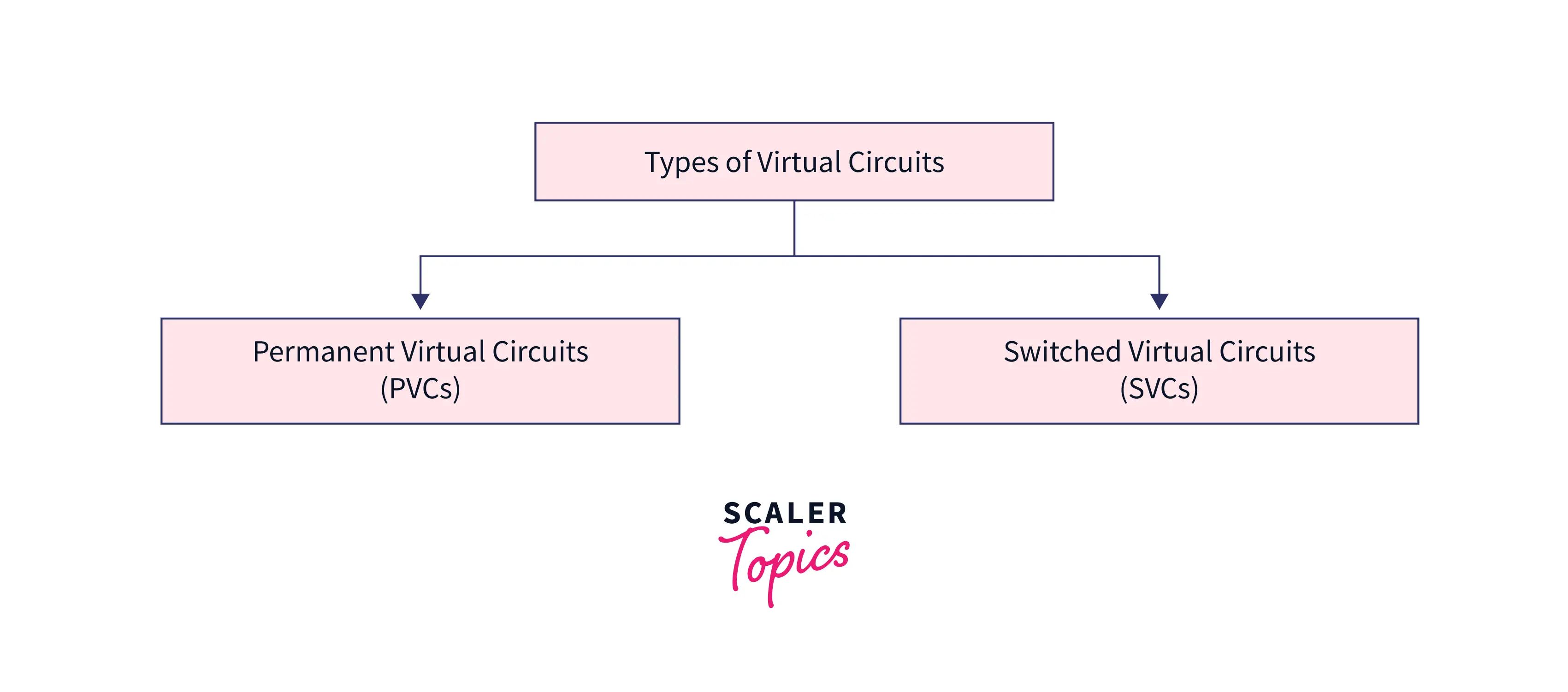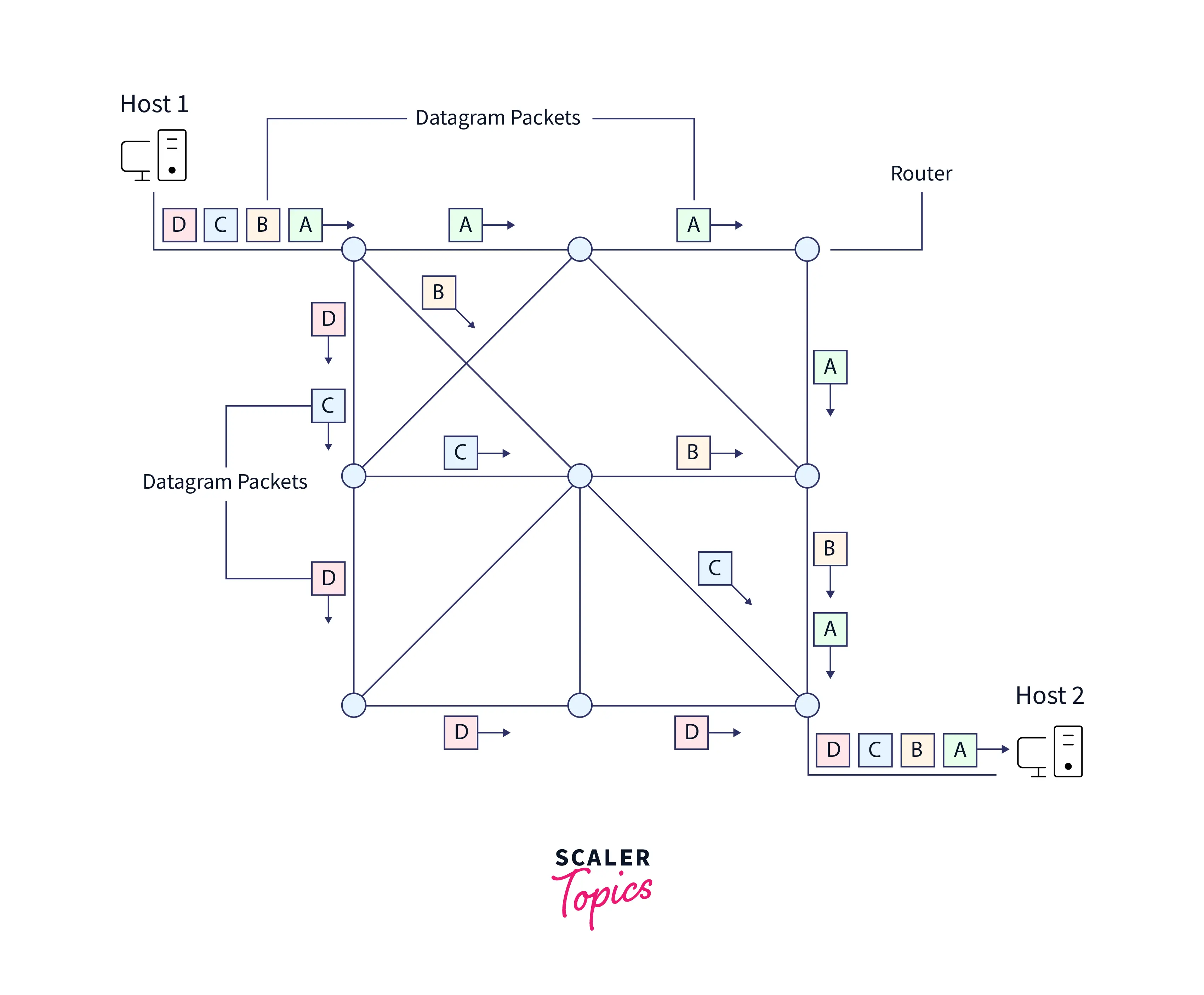Virtual Circuits are also known as connection-oriented switching. Virtual circuit switching establishes a predetermined path before messages are sent. In contrast, a datagram is a packet-switching technique in which each packet, known as a datagram, is treated as a separate entity. Each packet carries destination information, which the switch uses to route the packet to the correct destination. We will discuss both types of networks in this article.
Introduction to Virtual Circuit
Virtual Circuits are also known as connection-oriented switching. Virtual circuit switching establishes a predetermined path before messages are sent. This path is known as a virtual circuit because it appears to the user to be an infatuated physical circuit. The connection between the sender and the receiver is established using the call request and call accept packets.
A virtual circuit is a logical connection between two network nodes, usually in a telecommunications network. The path is made up of distinct network segments that are linked together via switches.
Now let’s have a look at the diagram given below to understand the virtual circuits more precisely:

- A and B are the senders and the receiver in the diagram above. The nodes are 1 and 2.
- The call request and call accept packets are used to connect the sender and receiver.
- Data will be transferred after a path is created.
- Following data transfer, the receiver sends an acknowledgment signal indicating that the receiver received the message.
- A clear signal is sent if the user wishes to terminate the connection.
Types of Virtual Circuit
The two types of Virtual circuits are as follows:

- Permanent virtual circuits (PVCs):- The switches provide performance similar to dedicated lines and are manually configured by the communication management station (the telco’s central office). These always-on circuits are typically employed for high-speed communication. PVCs are an expensive solution for wide-area networks (WANs) since they need telco resources (switches) to be devoted to a specific communication circuit regardless of whether or not that circuit is in use.
- Switched virtual circuits (SVCs):- When a communication session is created, the switches are immediately configured. When the session ends, SVCs are released and can be utilized to establish other communication paths. This is how regular telephone communication works. SVCs are typically used in WANs where backups to dedicated leased lines are necessary and are charged on a per-minute or per-traffic basis.
What You Need to Know about Virtual Circuit
Now let’s look at the various important points related to virtual circuits.
- Virtual circuits are networks that merely offer a connection service at the network layer.
- There is a reservation of resources such as buffers, bandwidth, CPU, and so on for the duration that a data transfer session will use the freshly configured virtual circuit.
- The end systems implement virtual circuits at the network’s edge.
- The order in which packets are sent never affects how they arrive at their intended destination.
- The first packet goes and reserves resources for successive packets, which follow the same path for the duration of the connection.
- The virtual circuit offers a dependable communication feature to guarantee that each group arrives as intended and that it maintains its original transmission order.
- Implementing virtual circuits is expensive since each new connection necessitates reserving resources and additional information processing at routers.
- In virtual circuits, the connection’s first packet merely uses the destination site address (global header). Other packets typically do not require a destination site address and utilize a short virtual circuit number (global header).
- Virtual circuits flowing through the malfunctioning router are all inoperable.
- The
ATM (Asynchronous Transfer Mode)Network, which handles phone calls, uses it.
Introduction to Datagram Networks
It is a packet-switching technique in which each packet, known as a datagram, is treated as a separate entity. Each packet carries destination information, which the switch uses to route the packet to the correct destination. There is no need to reserve resources because there is no specified channel for a connection session. As a result, packets contain a header including all of the destination’s information. The intermediate nodes examine the header of a packet and choose an appropriate link to a different node closer to the destination.
Resources in datagram networks are allocated on a FirstComeFirstServe (FCFS) basis. When a packet arrives at a router, it must wait for other packets to be processed, regardless of its source or destination.
The diagram below displays datagram packets sent from host H1 to host H2. The four datagram packets with the labels A, B, C, and D are all parts of the same message each being routed individually through a different route. The message’s packets arrive out of sequence at their destination. In order to recover the original message, it is H2’s obligation to reorder the packets.

What You Need to Know about Datagram Networks
Now let’s look at the various important points related to Datagram Networks.
- At the network layer, datagram networks are computer networks that provide a connectionless service.
- Since there is no specific path for a connection session, there is no need to reserve resources.
- Datagram networks are implemented in routers in the network core and end systems.
- The order in which the packets were sent does not necessarily reflect the order in which they arrived at their destination.
- Since routing tables on routers change dynamically, all packets are free to go through any intermediary router chosen at the time.
- Datagram networks are unreliable because their connectionless nature causes data packets to arrive at their destination out of the sequence as they were sent from the source.
- Since there is no need to reserve resources every time an application needs to communicate, datagram networks are always affordable and straightforward to install.
- Every packet must be associated with the complete address of the destination site (header) since every packet in datagram networks is free to choose any path.
- Route changes and packet loss are possible with malfunctioning routers.
- It is typically utilized in IP networks, which support data services like the Internet.
Differences between Virtual Circuits & Datagram Networks
Let’s look at the detailed comparison between Virtual Circuits and datagram Networks in the table given below.
| Basis of comparison | Virtual Circuits | Datagram Networks |
|---|---|---|
| Definition | Virtual Circuits are also known as connection-oriented switching. Virtual circuit switching establishes a predetermined path before messages are sent. | It is a packet-switching technique in which each packet, known as a datagram, is treated as a separate entity. Each packet carries destination information, which the switch uses to route the packet to the correct destination. |
| Connectivity | It is connection-oriented. | It is connectionless. |
| Path | In these networks, the path taken by the initial data packet between the source and destination nodes is allocated. All subsequent data packets sent between them will take the same path. | Since each datagram is treated independently, there is no fixed dedicated path for data transfer. The intermediate routers use dynamically updating routing tables to route each datagram. Therefore, two subsequent packets from the source may travel entirely different paths to their destination. |
| Header | Since they are all part of the same virtual circuit, all packets that make up a message have the same header information. | Even though they are part of the same communication, the separate datagram packets have different header information. |
| Phases | Transmission is performed in three steps: setup, data transfer, and teardown. | There are no such communication phases. |
| Complexity | In comparison to a datagram network, a virtual circuit is less complex. | However, compared to the virtual circuit, datagram networks are more complex. |
| Cost | Installation and maintenance costs for virtual circuits are higher. | Networks using datagrams are much easier to set up and maintain. |
| Resource Utilization | All resources, including CPUs, bandwidth, and buffers, are reserved before transmission. All data packets use the same resources, which are only released when the transmission is complete. | Before the transmission starts, no initial resource allocation is made for the individual packets. The resources are distributed on demand on a First-Come First-Serve (FCFS) basis when a packet arrives at a router. |
| Reliability | In comparison to the Datagram network, Virtual Circuits are more reliable for data transmission due to the defined path and assurance of fixed resources. | On the other hand, datagram networks are less reliable than virtual circuits since they allocate resources dynamically and follow dynamic paths. |
| Addressing | During setup, the addressing and route are decided. As a result, each packet just includes the VC number. | The complete source and destination addresses are included in each datagram packet. |
| Application | Virtual Circuits are implemented in networks using Asynchronous Transfer Mode (ATM) communications, such as when placing phone calls. | User Datagram Protocol(UDP) typically serves as the framework for datagram communication. In IP networks, they are used. |
Conclusion
- Virtual Circuits are also known as connection-oriented switching. Virtual circuit switching establishes a predetermined path before messages are sent.
- The path in virtual circuits is known as a virtual circuit because it appears to the user to be an infatuated physical circuit.
- Datagram Networks is a packet switching technique in which each packet, known as a datagram, is treated as a separate entity. Each packet carries destination information, which the switch uses to route the packet to the correct destination.
- In Datagram Networks, there is no need to reserve resources because there is no specified channel for a connection session. As a result, packets contain a header including all of the destination’s information.
- Resources in datagram networks are allocated on a
FirstComeFirstServe (FCFS)basis. - In comparison to a datagram network, a virtual circuit is less complex.
- Networks using datagrams are much easier to set up and maintain.
